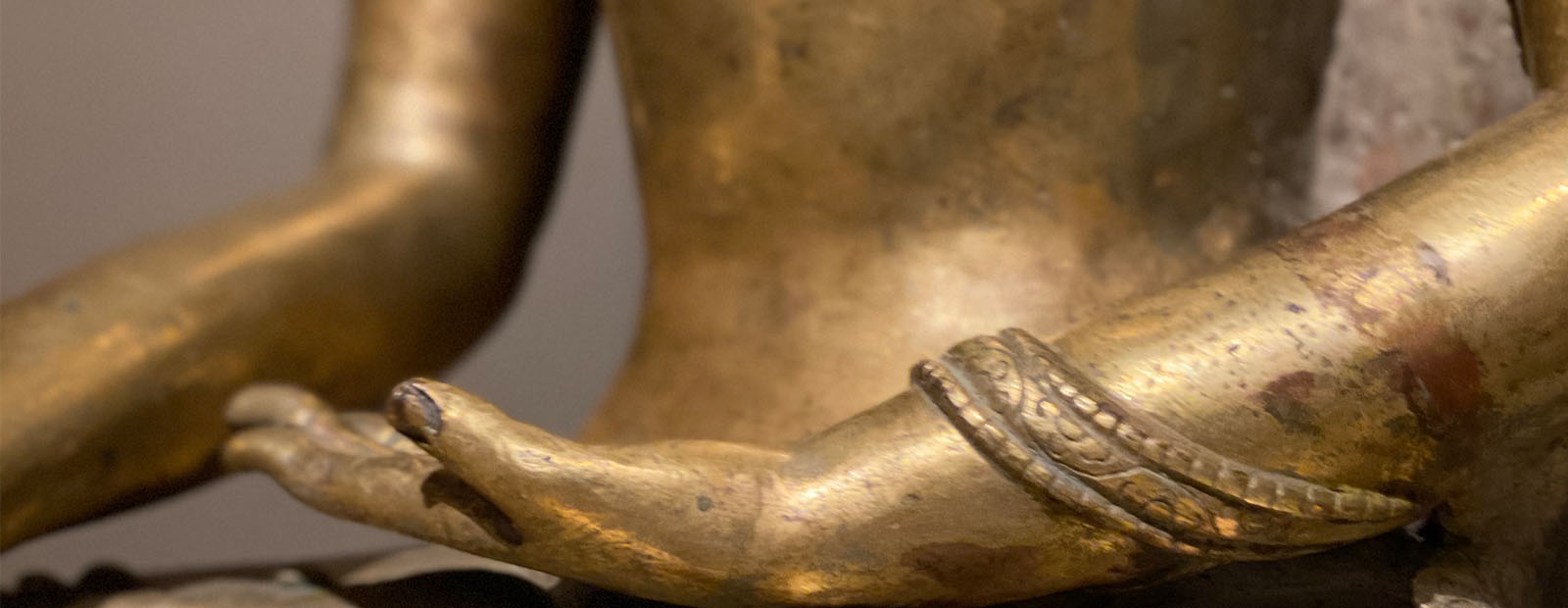In this video, Geshe Lobsang Tenzin Negi leads a 10-minute meditation in the Asian Galleries of the Carlos Museum alongside a 10th-century gilt statue of Shakyamuni Buddha from Tibet.
This meditation focuses on grief and the Parable of the Mustard Seed. In the story, from one of the foundational texts of Buddhism, a young mother, Kisa Gotami, is inconsolable and unable to accept the death of her young son, her only child.
Kisa carries the body of the dead child from neighbor to neighbor seeking something or someone who can bring him back to life. She is told to go to the Buddha—that he will help.
The Buddha tells the young mother to bring him a mustard seed from every house in the village, and he will help her. She departs with great hope, but as she does so, the Buddha tells her that the seeds must come only from homes that have not known death.
At Emory, Geshe Lobsang is a Professor of Practice in the Department of Religion and the Executive Director of the Center for Contemplative Science and Compassion-Based Ethics. He is also the founder and spiritual director of Drepung Loseling Monastery, Inc., in Atlanta.





